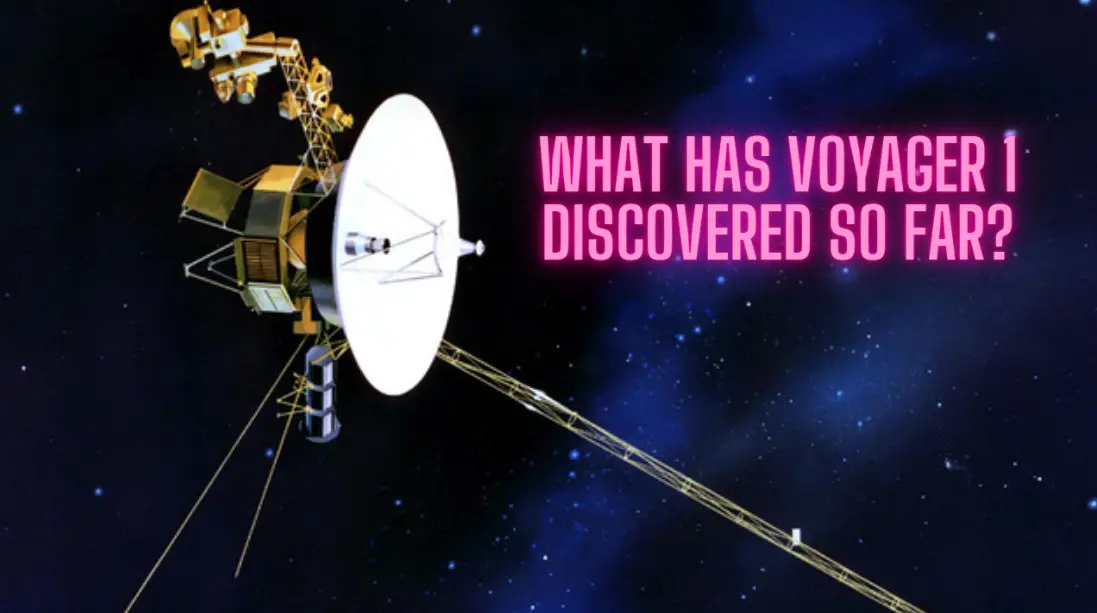Introduction
Since its launch on September 5, 1977, Voyager 1 has captivated the imagination of people all across the world and begun an astonishing voyage through the cosmos. Voyager 1 has fundamentally altered our perception of the cosmos thanks to the fact that it was the first artificial object ever to travel through the interstellar medium. In this article, we look into the remarkable findings made by this courageous spacecraft, giving light on its historic mission and the significant impact it has had on our knowledge of the universe. In addition, we discuss the impact these discoveries have had on our understanding of the cosmos.
The Grand Tour
The primary objective of Voyager 1 and its partner spacecraft, Voyager 2, when they were launched into space was to investigate the planets at the edge of our solar system. It set out on a route that became known as the “Grand Tour,” which gave it the opportunity to investigate Jupiter, Saturn, Uranus, and Neptune through a series of flybys. These planets were explored in this manner. The vast amounts of data that were collected during these contacts revealed previously unattainable insights into the varied and fascinating nature of the worlds that were so far away.
Jupiter: A World of Wonders:
Voyager 1 made its closest approach to Jupiter on March 5, 1979. Jupiter, a World of Wonders Voyager 1 made its closest approach to Jupiter on March 5, 1979. Incredible information was obtained by the spacecraft about the gas giant, such as that it possessed a chaotic atmosphere filled with whirling storms, enormous cloud formations, and the famous Great Red Spot. In addition, the Voyager 1 spacecraft found evidence of active volcanism on the moon Io of Jupiter, which was sending plumes hundreds of kilometers into space after each eruption.
Saturn and its Mysterious Satellites
Voyager 1 arrived at Saturn on November 12, 1980, after continuing its epic voyage through space. It was able to obtain some very breathtaking photographs of Saturn’s rings, illuminating the intricate structures, gaps, and shepherding moons that shape and sustain these ethereal formations. Additionally, the spacecraft identified new moons, including as Prometheus and Pandora, which enriched our understanding of Saturn’s intricate moon system even further.
Pioneering the Voyager Interstellar Mission
After completing its tour of the planets, the Voyager 1 spacecraft was sent into interstellar space, which is a place beyond the sphere of influence of the solar wind produced by our sun. It was the first object created by humans to break through the heliopause on August 25, 2012, which marked the beginning of its journey into interstellar space. This significant accomplishment not only marked the beginning of a new era in the field of space exploration but also yielded important new information regarding the interstellar medium and the boundary between our solar system and the greater cosmos.
The Sounds of Space
In addition, the legendary Golden Record, a time capsule containing the sights, sounds, and greetings of humanity, is aboard the Voyager 1 spacecraft. The record features a varied variety of music, languages, and natural sounds from across the Earth, and it was compiled by Carl Sagan and his colleagues. The Golden Record is not a scientific finding in the traditional sense, but it does serve as a symbolic representation of our humanity and its yearning to interact with possible extraterrestrial civilizations.
Conclusion
Voyager 1 has been a pioneering spacecraft like no other, providing us with important information about the extreme limits of our solar system and beyond. This incredible spacecraft has helped us comprehend the universe in a deeper and more nuanced way in countless ways, from illuminating the mysteries of Jupiter and Saturn to venturing into interstellar space. The legacy of Voyager 1 serves as motivation for further space exploration endeavors and as a reminder of humanity’s persistent curiosity and longing to investigate the vast cosmic expanse that lies beyond the confines of our home planet. We are waiting with bated breath for the next exciting installment of Voyager 1’s incredible mission, which will continue even as it travels deeper into the void.
![]()
